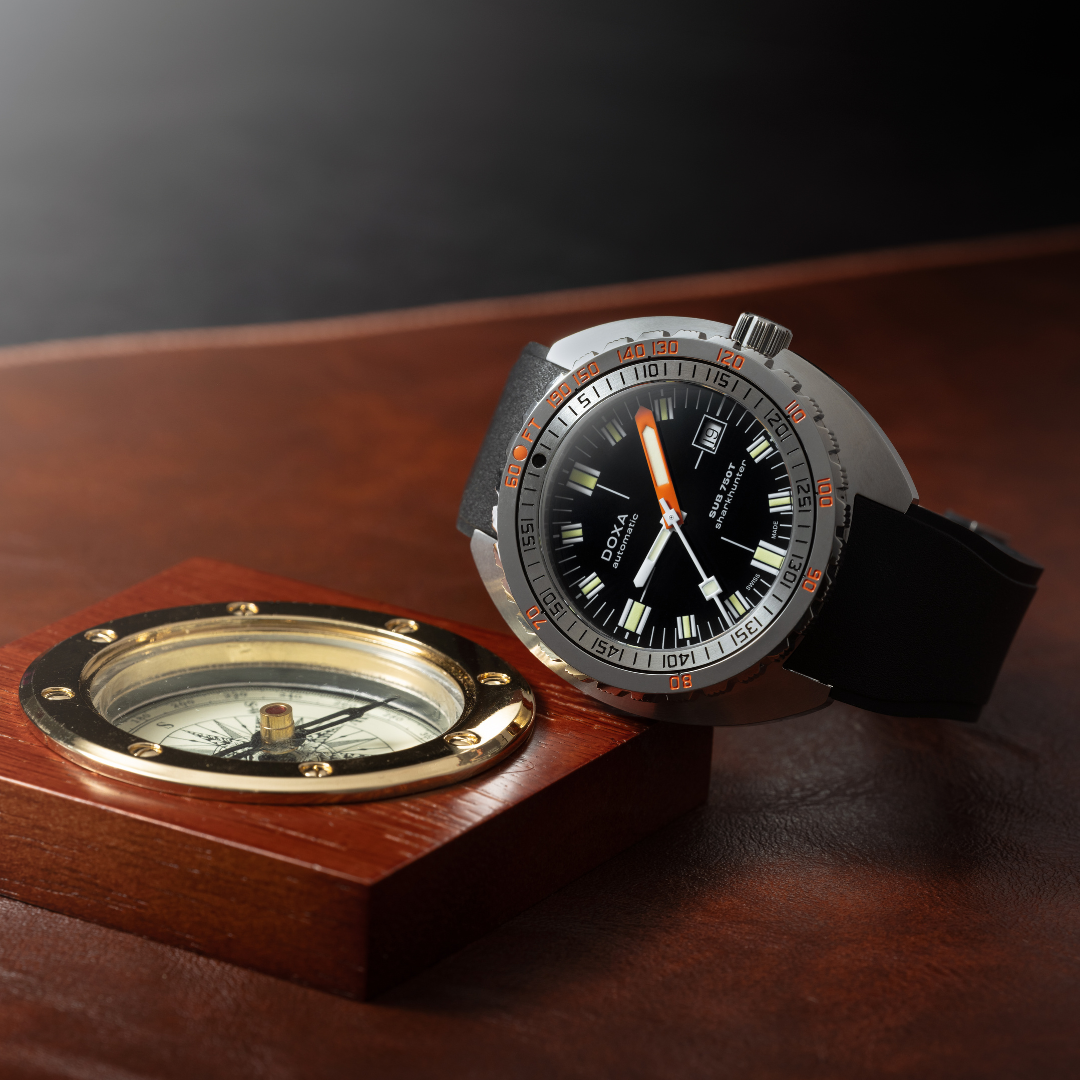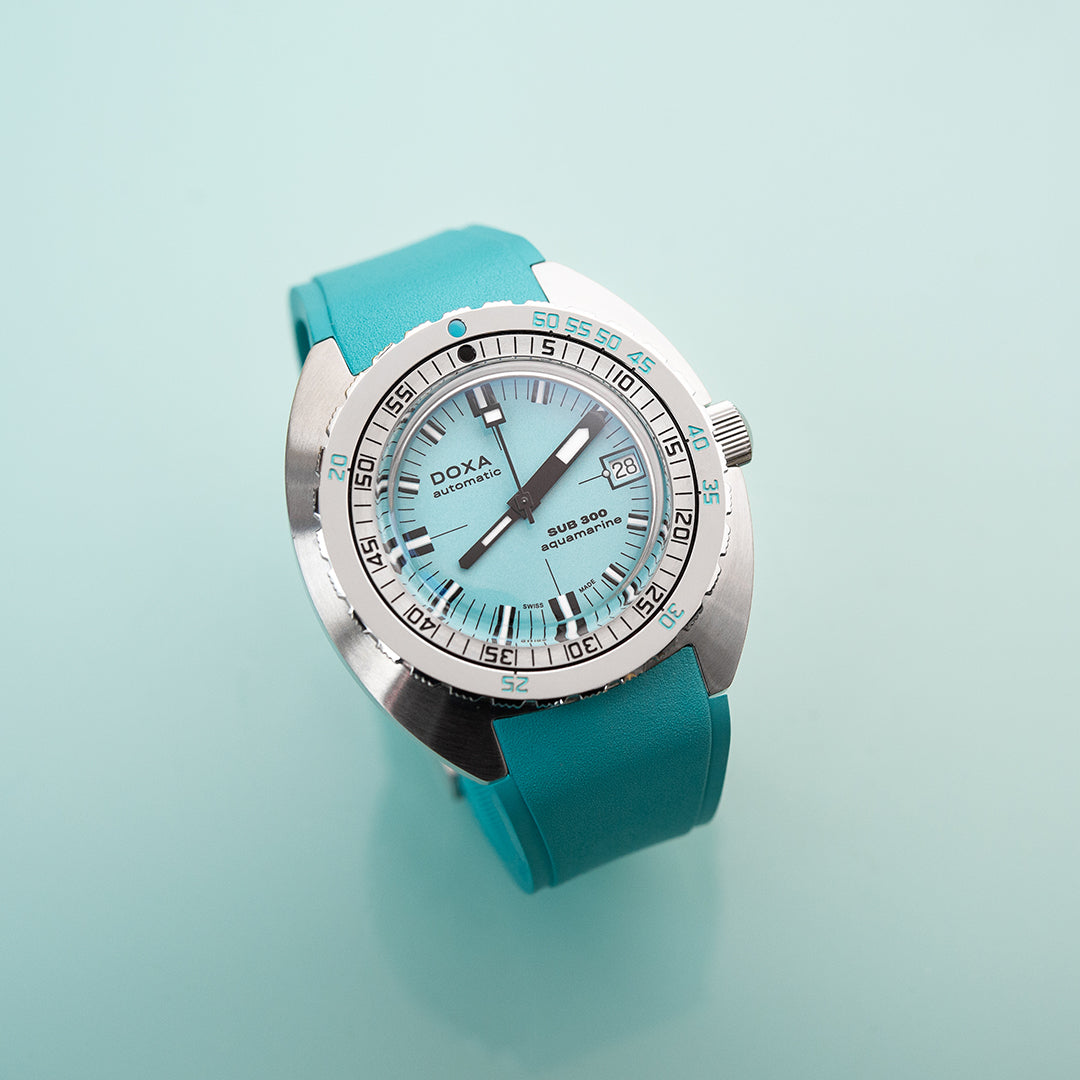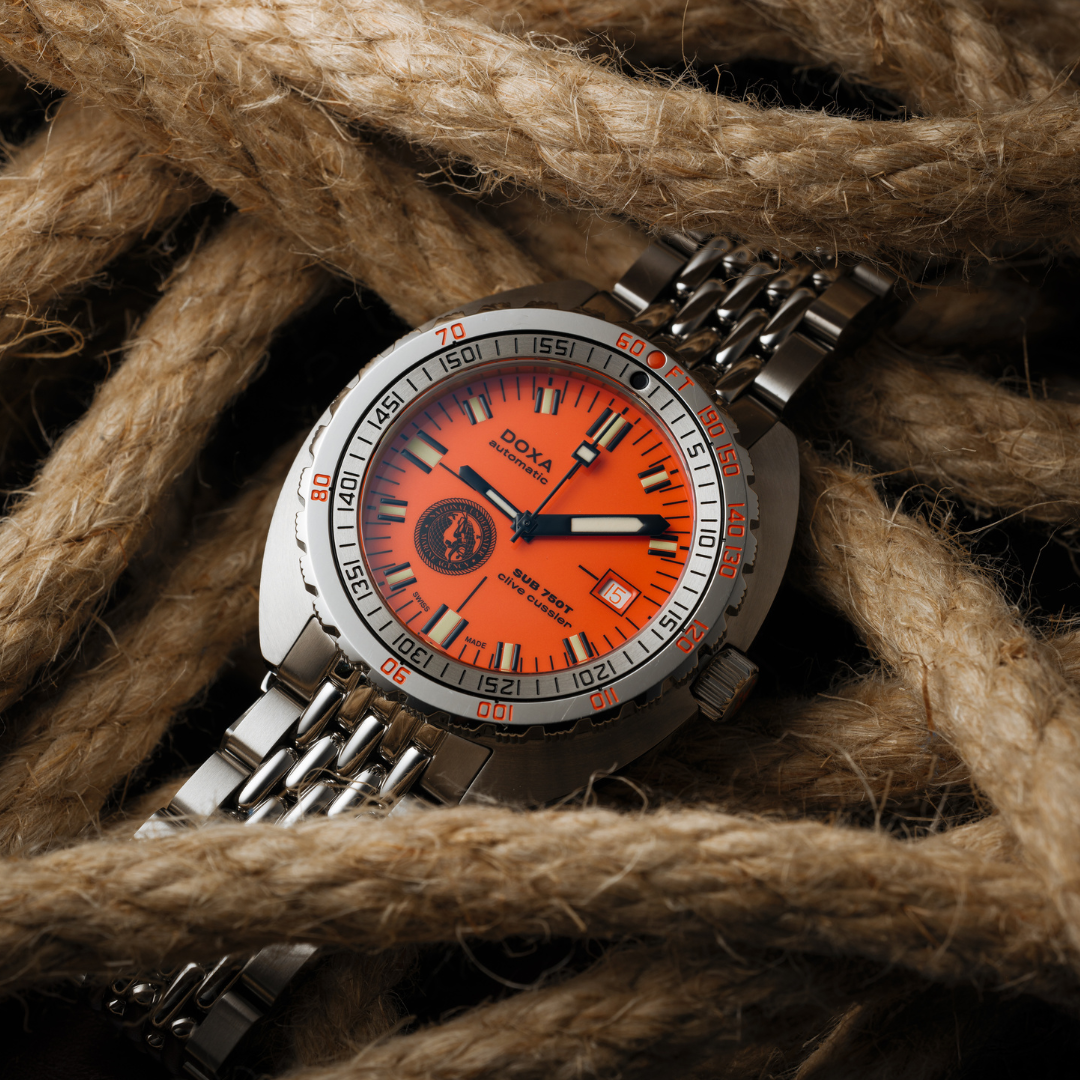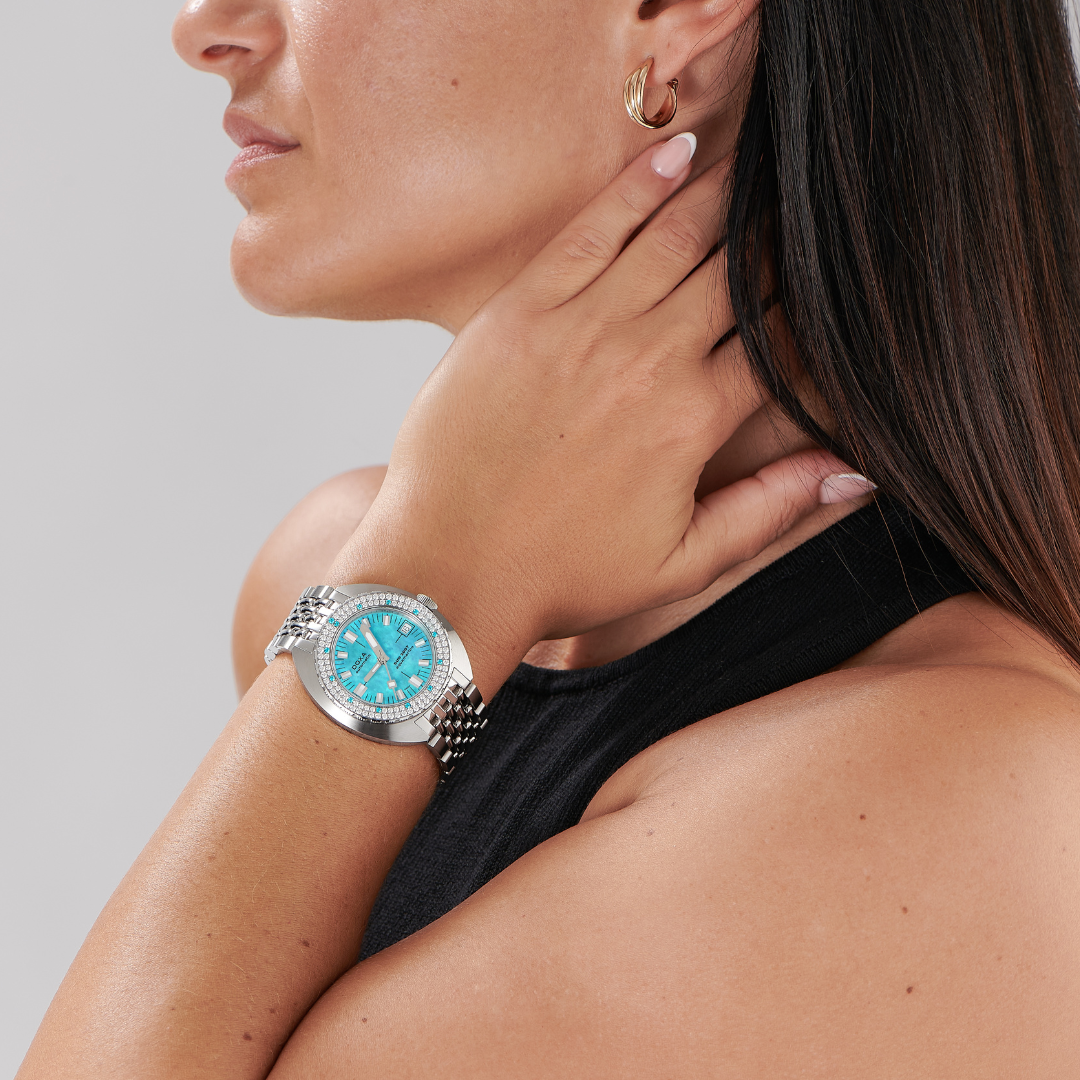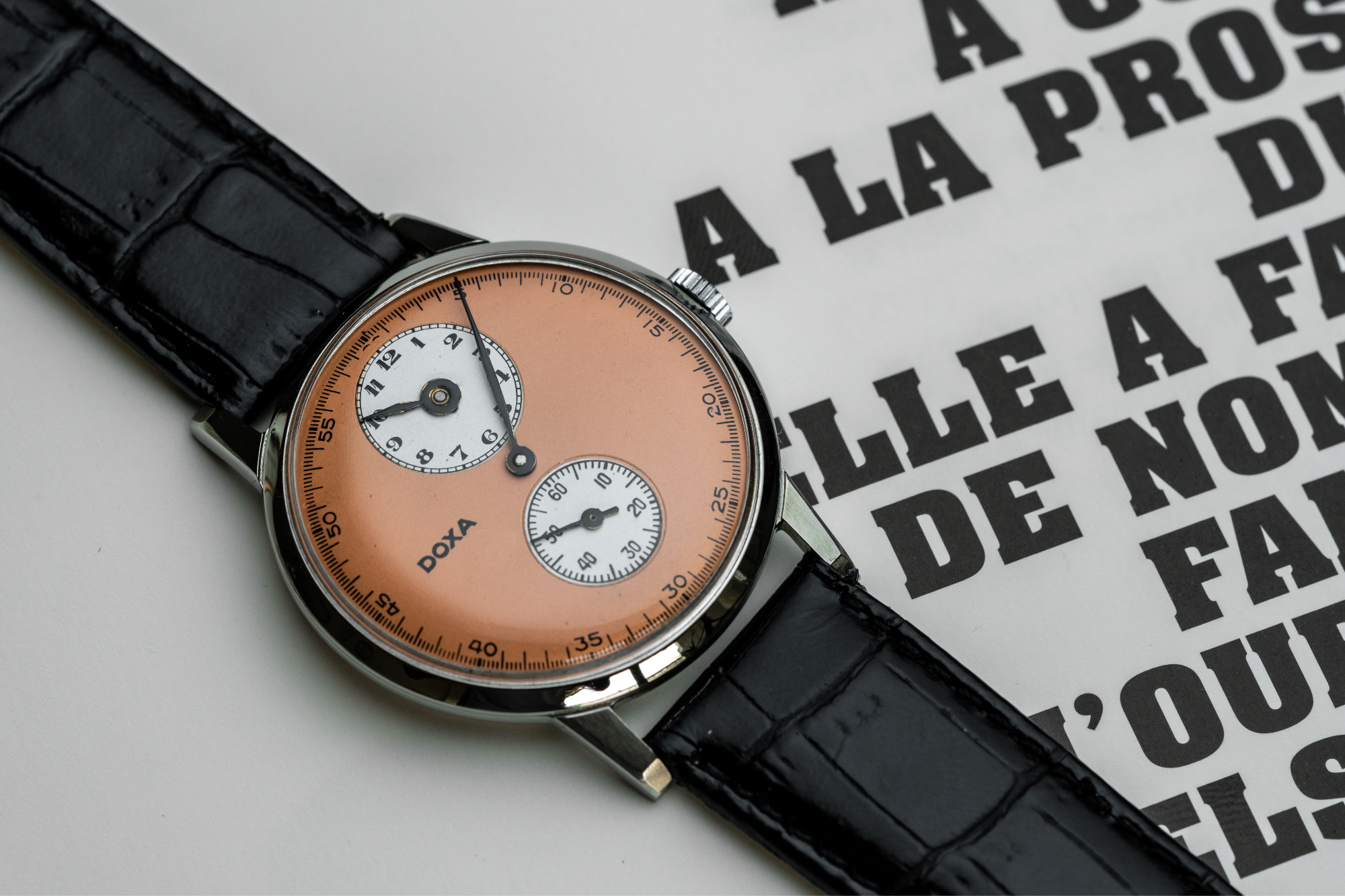
DOXA's Waterproof History
DOXA CEO, Jan Edöcs, is often quoted as saying his brand “stays in or around the water”. Today, DOXA is absolutely focused on the business of dive watches and celebrates this raison d’être through established timepieces such as the SUB ranges and the Army watch. This wasn’t always the case, however, as DOXA has a dressy past with a plethora of elegant watches from the mid-20th century that have a very committed and loyal following by collectors. Some of the most collectible are time-only and chronograph watches from the 1940s and 50s that, whilst now may look very different to DOXA’s current offerings, still share the ability to “stay in the water” or at least get nearer to the water than any other watches of the era.
In the early 20th century, car manufacturers would use coachbuilders to create the bodies for their beautiful machines. Known as coachbuilders, companies such as Pinin Farina would supply bodies to a range of car brands such as Ferrari, Fiat, Lancia and Alfa Romeo. The same was true of watch case manufacturers and two of the most famous manufacturers of waterproof cases were François Borgel and CR Spillman. DOXA utilized cases from the former for its time-only watches and the latter for waterproof chronographs.

Early DOXA watches were waterproof thanks to a partnership with François Borgel, who had a patent for a dust and waterproof watch case. The design was impervious to the elements thanks to a screw together case system. To be clear, this was a long time before the advent of recreational diving, which led to the development of dive watches, and at the time people didn’t expect their timepieces to be entirely impervious to water. The new watch cases allowed DOXA wearers to get their wristwatches wet and negated the need to completely stay away from the water!

These beautiful time-only DOXAs featured cases with a number of patents including the most important, a screw down caseback, known as the decagonal case. The decagonal case is easy to spot thanks to the screw down caseback that, if one looks carefully, has ten sides. Watchmakers were able to open these cases a lot more easily than other watches of the era with a simple spanner-style tool that had a ten-sided hole at its head. A vulnerable area of the case was the winding stem hole at the side, which could easily let water in, especially if the winder was left out a little. The cases had a patented cork stem seal that made this part of the case watertight and also dustproof. These cases were truly the forerunners of modern sports watches as they were also antimagnetic. This was made possible by an inner Faraday cage formed by the dial, a ring around the movement and a dust cap between the movement and the caseback. The exciting thing for collectors about these early time-only waterproof DOXAs is the huge array of different dials that were used in the watches.
Some of the most interesting and highly prized vintage DOXA watches are the mid-century steel chronographs. The most sought after by collectors are those in Charles Rodolphe Spillman (CRS) cases, which were some of the highest regarded in the industry and used by a number of watch brands including DOXA. The cases were large for the time, measuring 38mm with waterproof chronograph pump pushers and stylishly angled lugs. These cases featured a screw-down caseback with twelve sides; dodecagonal. DOXA utilized the Valjoux 22 caliber for many of these watches, a column wheel movement with running seconds in the left sub dial and 30-minute chronograph counter on the right.

Similarly to the time-only pieces, there are a multitude of interesting dials for collectors to search for. There are essentially three main chronograph scales used on a watch, telemeter, tachymeter and pulsometer. The telemeter was most commonly used by the military, as it allowed officers to ascertain how far away the enemy were on the battlefield. The telemeter recorded distance by timing the journey of a sound. The officer started the chronograph when he saw the flash of the artillery and then stopped it when he actually heard the sound. The pulsometer was used by doctors to assess the pulse of a patient and the tachymeter to assess the average speed traveled over a set distance. In some cases, all three scales were included on a dial, known as multi-scale dials.
Time-only and chronographs, DOXA has an illustrious history of watches that were at the cutting edge of being able to stay in the water for almost a century. 2023 will be an important year for the brand and fans of the chronographs should especially keep an eye out!

A DOXA Reference 9436 with gilt dial and radium luminous material dating to 1944. Gilt dials get their name due to the gold text on the dial. This is actually the brass dial plate showing through the dial surface that was printed in relief. (Pic: Barnebys UK)

This print advert from the 1940s perfectly illustrates DOXA's commitment to selling its watches through an adventurous lifestyle, a spirit that is still alive today in the brand. Truly the forerunner of the modern sports watch, this timepiece was impervious to water and dust, was antimagnetic and ready for the owner’s next adventure. (Pic: Watch Pro Site)

A DOXA watch from circa 1945 that is very similar to the timepiece featured in the above print advertisement. Note the painted luminous hour markers and that the watch is fitted to a Gay Freres bracelet from the era. (Pic: Watch Pro Site)

